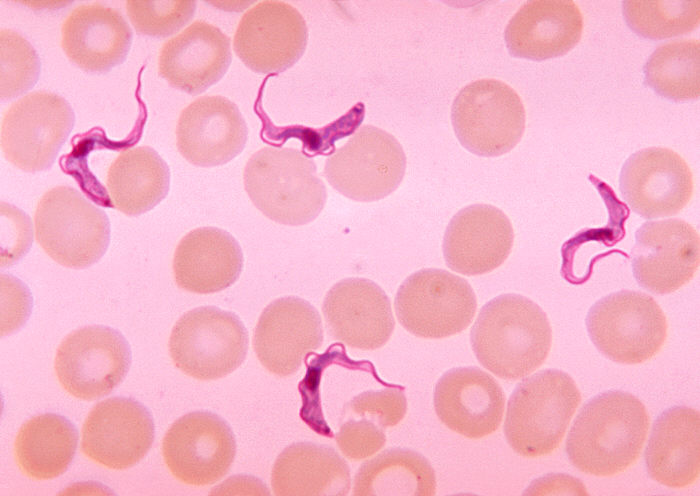Researchers from the Institut Pasteur de Montevideo and School of Medicina from Universidad de la República achieved a significant advance in the understanding of certain genetic mechanisms of trypanosomes – parasites that cause diseases such as Chagas and sleeping sickness – that can help identify pharmaceuticals aimed at blocking functions that allow it to survive or infect.
The research, published in Nature Microbiology, was coordinated by Carlos Robello, in charge of the Molecular Biology Unit of the IP Montevideo and professor of the Department of Biochemistry of School of Medicine, and was executed as part of Florencia Díaz Viraqué’s doctoral thesis, which was conducted in IP Montevideo.
Getting to know the parasites
Studied for decades because of their importance for human and animal health, it was believed that the genome of parasites of the trypanosome family, such as Trypanosoma brucei, Trypanosoma cruzi and Leishmania, functioned basically like any genome: that it contained the genetic information that was copied to RNA to produce the proteins necessary for life.
However, a few years ago, Robello’s group, together with researchers from the Science Faculty, discovered that the genome of Trypanosoma cruzi was “compartmentalized”: on the one hand, there were the genes necessary to carry out its biological functions, and on the other hand, there was another set of genes that guided the production of those substances (proteins), and allow the parasite to evade the immune response of a host organism. These genes form what was called the “disruptive compartment”.
Now, the work published in Nature Microbiology advances the knowledge about disruptive compartment and the rest of the genes, and found that there is close proximity between certain genes, which would allow them to be expressed (turned on or off) and to be able to generate diversity.
The work started from a question: is there a relationship between gene organization in the genome and its three-dimensional distribution? With this in mind, the group studied the organization of the chromatin (DNA in cells is highly condensed, forming chromatin the highest degree of chromatin compaction are the chromosomes), discovering that both compartments form “loop” type discrete folding domains; the also found that genes within a loop are expressed, while those that are between two loops remain “off”. This constitutes a paradigm shift with respect to what was previously thought about gene expression in these parasites. In addition, the disruptive compartment has contact regions among chromosomes, which confirmed the working hypothesis.
But even more surprising was the discovery of epigenetic changes in these genome regions. Epigenetic changes are modifications in the DNA that do not affect their sequence, but they do affect their ability to flow genetic information.
The results of the work open up new research perspectives in both the chromatin organization, as well as in the regulation of chromatin expression and epigenetics of these parasites. In addition, these findings pave the way for continuing to study and develop new tools to combat these parasitosis.


